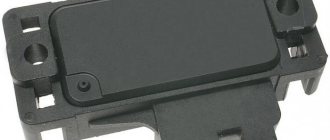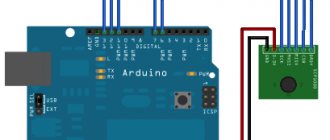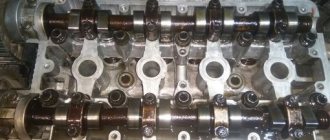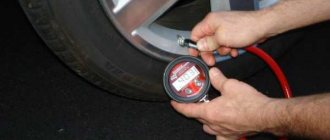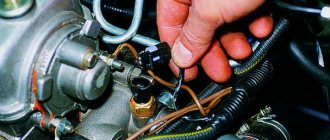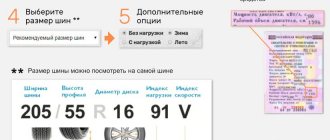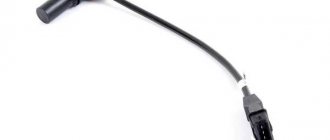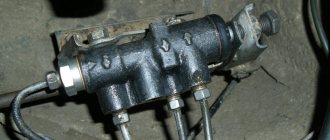In a car, all components and mechanisms must work correctly; this is how it will be a joy to operate the car. If minor faults are detected and corrected in a timely manner, you can avoid costly repairs in the future. Also, this approach to maintenance is the key to safe use of the car. It often happens that oil appears in the intake manifold. Let's figure out why this happens, how to diagnose and then fix this malfunction.
Symptoms of a problem
This problem can be identified by certain signs. The oil may be directly in the intake manifold or in the throttle valve. This is the simplest diagnostic method, but it is associated with the need to disassemble the upper part of the power unit.
View gallery
The problem is also identified by bluish smoke coming from the chimney. Even inexperienced drivers can see this. But this symptom may also indicate other problems with the engine.
You can talk about a malfunction if oil consumption increases sharply. It is worth checking its level regularly using the dipstick. When does oil still appear in the intake manifold? You can begin to suspect a malfunction if the engine thrust has noticeably dropped, and the noise level has increased during its operation.
Oil drops on the air filter are another sign. It's very easy to check if there is oil there. The air filter on most cars is very easy to access.
There are several causes of oil in the intake manifold. Let's look at the most common of them.
Crankcase ventilation
The crankcase ventilation system is designed to reduce pressure in the crankcase. Pressure is formed there due to exhaust gases entering during engine operation. To do this, the crankcase is connected through a pipe to a low pressure zone or a vacuum zone. In naturally aspirated internal combustion engines, this is precisely the intake manifold. If the engine is turbocharged, then the crankcase ventilation is connected to the inlet pipe on the turbocharger.
Any turbine has a line designed to drain oil. It connects to the engine lubrication system. Most often, this line is connected below the oil level in the crankcase. Therefore, when the pressure increases, the oil from the turbocharger cannot be removed normally. This problem may also be due to a clogged separator. This is one of the nodes in the ventilation system. The pipe may also be coked.
Tips and tricks
Considering that the formation of soot and the accumulation of dirt in the intake is inevitable, it is advisable to clean the intake tract for preventative purposes, and not when problems are already making themselves felt.
In cases where the diesel engine is constantly operated in city driving mode, treatment must be carried out every 6 months. This approach allows the engine to maintain its performance and avoid more serious problems. If the car constantly drives on the highway, that is, operating conditions are more gentle, it is recommended to clean the diesel engine intake at least once a year.
Compliance with these rules allows, by regularly treating the engine with an active chemical cleaner, to avoid the urgent need to disassemble the diesel engine for mechanical cleaning. At the same time, the risk of failure of expensive components and systems of a high-tech turbodiesel engine is reduced.
It is important to understand that if everything is done correctly, then regular preventative cleaning of the intake allows you to solve existing problems and prevent the occurrence of new problems. Note that the cost of cleaning the intake tract of a diesel engine is quite acceptable, especially against the backdrop of costly repairs, which involve disassembling the internal combustion engine and replacing failed elements.
Removing coke deposits and carbon deposits in the engine: available methods. Self-flushing of the engine without opening, mechanical cleaning of the engine.
Why is it recommended to disable the EGR system on a diesel engine and how to disable the EGR correctly. Mechanical shutdown of the EGR valve and software shutdown.
Why does the particulate filter clog? Operation, prevention. Basic methods of cleaning the filter with and without removing the washing liquid. What's the best way to clean it?
Why and when you need to flush the engine power system. How to flush the engine fuel system yourself: gasoline and diesel engines.
Purpose, types and design features of the crankcase ventilation system of an internal combustion engine. Common crankcase ventilation problems.
Purpose and design of the exhaust gas recirculation system. EGR valve, high and low pressure EGR system. Malfunctions of the recirculation system.
Theme Options
Search by topic
Deformation of the cylinder head or its components
This is another reason why the intake manifold is covered in oil. Various cylinder head malfunctions occur here. Due to damage or wear, some cylinder head parts are unable to come together tightly and hermetically. Nothing prevents oil from entering the manifold. Often this problem can be accompanied by a white coating in the oil, and the engine may also lose power. It is simply impossible not to notice these “symptoms”.
View gallery
You can also highlight the large production of valve guides in the cylinder head. If this occurs, then the valves are practically not lubricated - this is where the oil in the intake manifold comes from. Next, the lubricant enters the cylinders, where it burns safely.
Intake manifolds on conventional Porsche cars
Porsche essentially did the opposite: by changing all the length and width of the pipes on the intake manifold of its boxer engine from the original, 10 years ago, in 2008 (on the 911 GT2), German engineers added expansion areas on the intake in order to..., on the contrary, reduce the pressure in the manifold before the air-fuel mixture enters the cylinder, which seems paradoxical, since it mirrors all the previous developments of auto companies over the past almost 100 years!
The result of Porsche's seemingly counterintuitive approach is that on their four- and six-cylinder turbocharged boxer engines, the intake air becomes much cooler, reducing knock and allowing fuel consumption to be reduced by 12% while generating the same amount of horsepower compared to a normal intake manifold. How do you like this: lower detonation, plus a 12% reduction in fuel consumption without reducing power. And all this thanks to the cunningly shaped intake manifold alone!
Diagnosis of cylinder head
Deformations can be detected using special stands or visually. It is recommended to carefully inspect the motor for damage. If there are problems, then a loose fit of the parts to each other will be noticeable. But in most cases, visual diagnosis can be difficult. Then it’s a direct road to a specialized stand.
View gallery
The wear in the valve guides can be determined by the knocking of the valves that accompanies engine operation. By eliminating these causes, you can solve the problem of oil in the intake manifold.
DBP cleaning
The absolute pressure sensor (MAP) in some car models affects the SOP. Based on its readings, the ignition control unit adjusts the advance angle. If the sensor is dirty, it will either not function at all or will give incorrect readings.
Cleaning the intake manifold pressure sensor is quite simple. You need to dismantle and wash it with white spirit using a stiff toothbrush. Then you can install the element back.
Gaskets
The intake manifold is secured to the power unit using gaskets. This avoids possible air leaks. The gasket also helps limit oil from entering the manifold. But over time it can become damaged. In this case, the oil still gets there. The motor may start to fail because of this. If there is a mass air flow sensor, the ECU will generate an error. All this suggests that the gasket under the manifold is damaged.
There can be many reasons for its damage. Most often, these elements fail due to wear and tear. Sometimes the gasket breaks due to overheating. However, modern elements can withstand high-temperature influences. Sometimes the gasket is damaged during engine assembly.
In this case, getting rid of oil in the intake manifold is simple - you just need to replace the gasket. Then the collector is installed back. But you need to observe some nuances. It is recommended to thoroughly clean the surfaces of the engine and manifold. The nuts are pulled with a strictly defined torque.
Why Porsche makes intake manifolds differently than other automakers
For many of us, even those who are truly obsessed with cars, topics of discussion such as the shape of intake and exhaust manifolds are too boring and almost always uninteresting. Most of us frankly don’t give a damn about the angle of curvature of this very collector, its length and other abstruse engineering gizmos. Most of us just want to enjoy our car, or at least have a reliable car in operation that will not break down and cause inconvenience, which in itself is a pleasure.
Alas, it is a pity that we do not pay due attention to non-obvious but important things. There are no unnecessary parts in the car, but the importance of some of them is so difficult to overestimate that it is simply surprising why a monument has not yet been erected in honor of this part in the courtyard park of some automobile plant. One of these car design elements is the intake manifold.
We tend to think of intake manifolds as just pipes that admit air or mix the air-fuel mixture before it enters the combustion chamber. Some of us even know that certain elements of the fuel supply system are attached to it, such as injectors, carburetor, throttle valves, etc. In general, nothing complicated, obscure or unstudied. But in fact, everything is not so simple and, to a certain extent, very interesting. This video will help you understand this from an engineer from the YouTube channel “Engineering Explained”, Jason Fenske, who talks about some of the secret technologies used by Porsche to improve the performance of their engines using manifolds (the video has subtitles in Russian, activate them in the menu "Settings"):
Video taken from the YouTube channel “Engineering Explained”
If you haven’t made it through the video, let’s briefly outline how the engineer explains, using the example of the operation of conventional intake manifolds, the advantages of the manifolds developed by Porsche. You will also learn how these intake manifolds are designed to increase pressure in the intake valve area and why this is needed.
Turbine
Before we talk about why the turbine drives oil into the intake manifold, it is necessary to remember its structure.
View gallery
To put it exaggeratedly, the compressor has a primitive design. It consists of a shaft on which two combs with blades are installed. One of the combs is driven by exhaust gases. The other rotates due to the fact that it is on the same shaft. The number of revolutions can be high, so the shaft must be equipped with high-quality bearings. But as practice shows, dry bearings are not able to withstand work in a turbine. The part becomes very hot, as a result the unit overheats and jams.
For the unit to work effectively, it was necessary to somehow remove excess temperature and improve sliding. Oil does this very well. There are two lubrication channels connected to the shaft for each bearing. This way you can get high speeds and high performance.
Everything is fine, but this design provoked the emergence of many problems that cannot be solved today. And the most difficult of them is related to the fact that the turbine throws oil into the intake manifold.
Intake manifold, problems, air leaks.
Posts: 114
Tell me please. the other day I decided to clean the valve xx - it was covered in carbon deposits (inside). through the hole under the valve I saw that carbon deposits were also present in the manifold. it's normal or not. if it's bad. then what to expect. and what to repair?
Methods for diagnosing air leaks in the intake manifold:
1. Smoke is forced into the intake manifold. It turned out that the crankcase ventilation tube in the bend at the bottom was cracked. There was no extraneous whistle, and the speed also rose. Help for newbies. QUESTION AND ANSWER (part 2) (post #12863729)
2. Spray carburetor cleaner onto the intake manifold and listen to the engine. How it changes means it. Intake manifold, problems, air leaks. (post #11194293)
3. Start the car, open the hood and give the gas sharply, the car stalls and the engine puffs and sneezes then normal. Then close the air vent with your hand and give the gas again. If the engine starts to run better, the reason is most likely in the intake manifold gasket. The engine does not pull/stalls/shuts up. (P) (message #12854887) 4. The engine warms up to operating temperature, remains idling, sprays from a can containing a mixture that burns well, for example, a carburetor, into the place where there is a suspicion of air leaks - the cleaner, at worst, is simply lubricated with a brush and gasoline. If there is an air leak in this place, along with the air, the engine will also suck in a certain amount of the combustible mixture - the speed will immediately increase, which will signal a leak in this particular place. But! There may be other options: the engine shakes when cold, but when warm, it works normally. In this case, there is no need to wait until the engine warms up, but on the contrary, you should look for air leaks using the above-mentioned method. Pay close attention to the intake manifold gaskets and injection nozzle O-rings. The engine does not pull/stalls/shuts up. (P) (post #14389536)
Why does the turbine drive oil?
If something disrupts the normal operation of the turbine, it begins to drive oil. This is not the most serious fault, but a lot depends on the compressor model and the type of fault. But the breakdown must be found and fixed. After all, even if you install a new turbine and do not eliminate the cause, the new turbine will drive oil into the intake manifold.
Indirect causes can be found and eliminated yourself. Often turbines drive oil due to pressure problems. The locking rings can no longer perform their task properly. The pressure is broken and it becomes easier for the oil to flow.
View gallery
If there is wear on the gaskets and seals, lubricant may enter the manifold during turbine operation. This happens actively, since a lot of oil is pumped through the turbine. Eventually it spills over the top. This shows up very clearly. There is not only oil in the intake manifold, but also on the spark plugs. The situation can only be corrected by repairing the turbine.
The repair itself and its features depend on the car model. Repair kits are available for sale for some turbines. This allows you to avoid unnecessary expenses and very quickly return the unit to operation. This kind of work can be done independently. But there are models for which manufacturers do not produce spare parts, and then the part has to be replaced completely.
Air filter dirty
Complicated air intake for the turbine is one of the causes of the malfunction. The air filter is often to blame for this - people forget to change it. The air intake pipes may also be partially blocked. It may get pinched or break.
During turbine operation, a vacuum is generated. If there is not enough air, the pressure increases significantly, oil is drawn out of the turbocharger.
View gallery
For a turbine, the air filter is very important. Basically, the lubricant is driven away due to the fact that the pressure is broken precisely because of the clogged filter. On turbocharged engines, the cleaning element must be changed every 8 thousand kilometers.
Pipes
This is another reason. If the oil has not been changed for a long time, the pipes tend to become clogged. Even if the turbine is repaired, the pipes are cleaned. It is very important. If the oil is under the intake manifold, then a pressure difference occurs due to the pipes or filter. It is also important to monitor the tightness of the air elements; if the pipes have cracks or other signs of deformation, they should be replaced with new ones.
View gallery
Otherwise there will be excessive air leaks. This is harmful for both turbocharged and naturally aspirated engines. The problem is further aggravated by the fact that unpurified, dirty air gets through these cracks, bypassing the filter. And the presence of dust in the cylinders of internal combustion engines leads to premature wear of the piston group.
